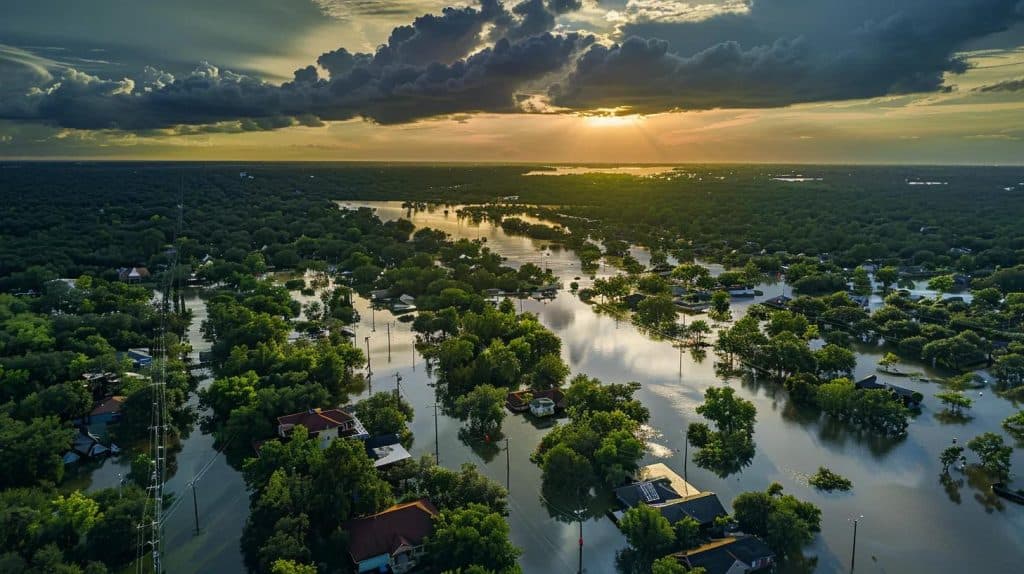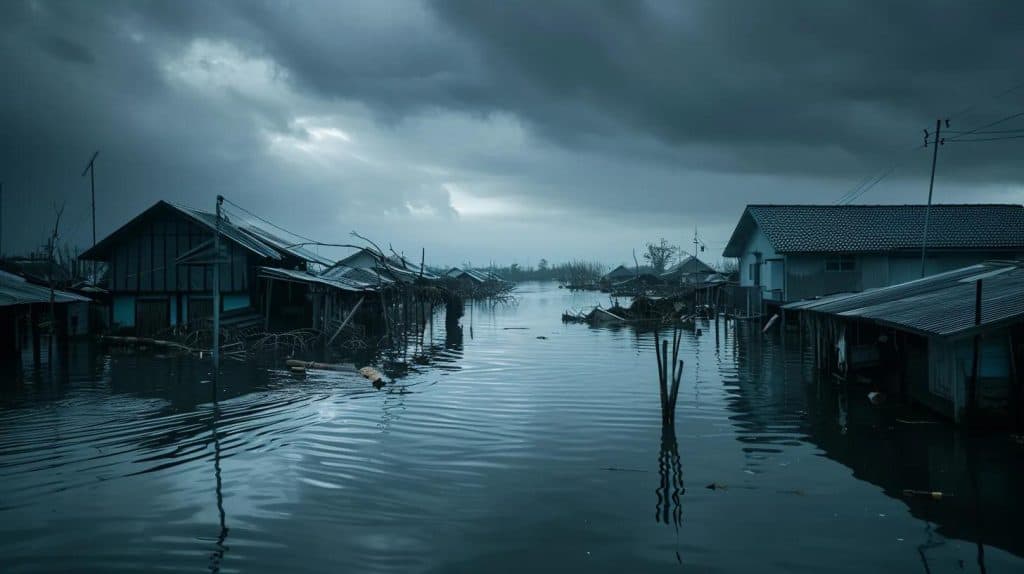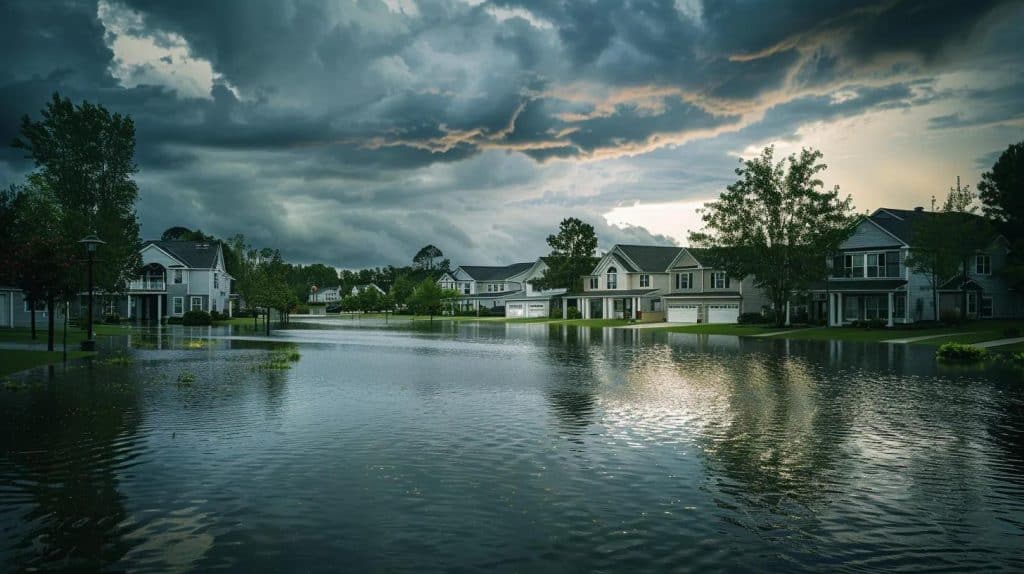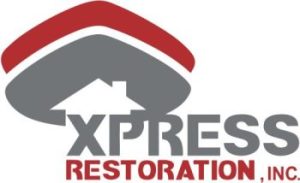Flooding vs. Other Water Damage Sources: Key Differences
Flooding can cause significant damage to homes, yet many people remain unaware of how it differs from other sources of emergencywater damage. This guide for homeowners will clarify key aspects of flooding, including its main causes and effects on communities in San Diego. By understanding the flood factor compared to other water sources, readers will be better equipped to address potential threats to their property and recognize when professional mold remediation may be necessary. Engaging with this content will help homeowners protect their investments and respond effectively to water damage situations.
Key Takeaways
- Different types of flooding require specific management and restoration solutions
- Climate change exacerbates flood risks, impacting both urban and rural communities
- Community preparedness significantly enhances resilience against flooding and other water damage challenges
- Advanced technologies improve flood prediction and monitoring, aiding effective response efforts
- Understanding flooding‘s unique risks helps homeowners protect their properties through informed decision-making
Understanding Different Types of Flooding

Different types of flooding present unique challenges and risks. Coastal flooding occurs along shorelines, often exacerbated by storms, affecting regions like san diego county. River flooding typically results from heavy rainfall or melting snow, creating specific patterns. Flash floods can happen suddenly, while urban flooding highlights problems in developed areas. Groundwater flooding arises from subsurface water, posing distinct issues. Understanding these categories is essential for effective water damage restoration and mitigation, including mold remediation. In cases of emergencywater damage, contacting local san diego services can provide immediate assistance. Additionally, referring to the fema homepage offers valuable resources for flood mitigation and response, along with weather information.
Coastal Flooding and Its Unique Challenges
Coastal flooding presents distinct challenges due to its close association with storms and rising sea levels influenced by climate change. Areas like San Diego County are particularly vulnerable, as these natural disasters can lead to significant property damage, including emergency water damage, and disruption. Understanding these risks is vital for effective risk management, utilizing resources from the fema homepage, and ensuring that homeowners have the right insurance information from the insurance information institute to protect their assets from potential flooding events. Additionally, using resources such as a guide for homeowners and san diego services can further aid in preparedness and recovery efforts.
River Flooding: Causes and Characteristics
River flooding typically arises from heavy precipitation events, which can be intensified by extreme weather patterns linked to the effects of climate change. Reliable weather information can help predict such events. These flooding occurrences can overwhelm riverbanks, leading to overflow into nearby areas, causing substantial damage to properties and infrastructure, including emergency water damage and mold remediation. Understanding the causes and characteristics of river flooding is critical for homeowners, as they need to be aware of potential risks and the importance of flood myth awareness, ensuring adequate preparedness through a guide for homeowners and insurance coverage from the insurance information institute. Additional resources such as the FEMA homepage can provide further assistance.
- Heavy precipitation leading to increased river levels.
- Overwhelmed riverbanks contributing to flooding.
- Impact of extreme weather and climate change on river dynamics.
- Groundwater interactions influencing flooding severity.
Flash Floods and Their Rapid Onset
Flash floods occur with little warning, often resulting from intense rainfall or sudden dam failures, leading to rapid water accumulation. Access to reliable weather information can help predict their occurrence. Their swift onset can create significant vulnerability, especially in urban areas where infrastructure may not be equipped to handle such sudden influxes of water. The 2022 Pakistan floods highlight the devastating impacts flash flooding can have, not only causing property damage and emergency water damage but also increasing the risk of injury among residents. For those dealing with property loss, resources like the insurance information institute are invaluable. Effective water treatment solutions, including mold remediation, are crucial in the aftermath. A guide for homeowners can aid in restoring safety and preventing further complications.
Urban Flooding: Issues in Built Environments
Urban flooding poses significant challenges in built environments, particularly in areas where infrastructure is not designed to manage heavy rainfall or rapid snowmelt. Access to reliable weather information can aid in preparedness and response efforts. This phenomenon can lead to water accumulation and emergencywater damage in streets and buildings, exacerbating the effects of air pollution and negatively impacting public health. As seen in regions like East Africa, where drought cycles can alter land conditions, urban flooding can become more severe, highlighting the need for effective drainage solutions, mold remediation, and urban planning to mitigate risks associated with both flooding and other water damage sources. Homeowners may benefit from a guide for homeowners to navigate these challenges, and resources such as the fema homepage provide additional support.
- Urban infrastructure often struggles to handle excessive water flow.
- Air pollution increases health risks during flooding events.
- Drought cycles can influence the severity of urban flooding.
- Snowmelt can overwhelm city drainage systems, leading to floods.
- Effective urban planning is essential for flood prevention.
Groundwater Flooding: Causes From Below
Groundwaterflooding occurs when water from beneath the earth’s surface rises, saturating soil and structures. This type of flooding often happens in regions with a high water table or poor drainage basins, leading to significant issues such as the contamination of water sources with organic matter, which can contribute to environmental degradation. guide for homeowners need to be aware that groundwaterflooding can require different restoration solutions such as mold remediation compared to surface flooding, and organizations like the International Rescue Committee emphasize the importance of preparedness in affected areas. For more information, visit the fema homepage. Additionally, accessing weather information and consulting resources like the iicrc website can aid in effective response and recovery.
| Flood Type | Causes | Impact | Restoration Solutions |
|---|---|---|---|
| Groundwater Flooding | High water table, poor drainage basins | Soil saturation, contamination of water sources | Specialized water extraction, soil remediation |
| Coastal Flooding | Storm surges, rising sea levels | Property damage, erosion | Barrier installation, drainage improvement |
| River Flooding | Heavy rainfall, snowmelt | Overflow of riverbanks | Flood defenses, natural barriers |
| Flash Floods | Intense rainfall, dam failures | Rapid water accumulation | Immediate emergency response, safety measures |
| Urban Flooding | Excessive rain, poor drainage | Water accumulation in streets | Infrastructure upgrades, better drainage systems |
Flooding comes from many places, some can surprise you. Let’s look at what really causes these floods and how they change everything.
Analyzing the Main Causes of Flooding

Analyzing the Main Causes of Flooding
Flooding results from a variety of natural and human-induced factors. Natural conditions such as heavy rainfall and erosion significantly contribute to flood events, while human activities can exacerbate these issues. Geographic and topographic elements influence flood susceptibility, as do unprecedented weather patterns supported by reliable weather information. Additionally, inadequate infrastructure can worsen conditions in flood-prone areas, increasing the risk of emergencywater damage, highlighting the complex interplay between these factors and their impact on communities. In such scenarios, resources like the FEMA homepage, the insurance information institute, and the iicrc website provide essential guidance for homeowners, including measures for mitigation and recovery and mold remediation.
Term:
Natural Factors Leading to Flood Events
Natural factors leading to flood events often include heavy rainfall, which can exceed the capacity of streams and rivers, causing overflow into surrounding habitats. The flood factor includes the intensity and duration of rainfall. The geographical features of an area, such as the slope of the land and the shape of the stream bed, play crucial roles in how water is transported during storms, where accurate weather information is essential, which can be accessed via the fema homepage. Additionally, communities situated in flood-prone zones may benefit from participating in the National Flood Insurance Program and consulting a guide for homeowners to mitigate risks associated with flooding.
Human Activities That Contribute to Flooding
Human activities significantly influence flooding, often compounding the effects of natural events. Urban development, deforestation, and pollution contribute to increased runoff, which can overwhelm drainage systems during heavy rain or snowmelt, leading to emergencywater damage. Homeowners can consult the guide for homeowners to better prepare for such events. Furthermore, the release of carbon into the atmosphere leads to climate changes that can intensify storms and tidal flooding, directly impacting local drinking water sources and the overall health of the natural environment. For more information, visit the FEMA homepage or the IICRC website.
The Role of Geography and Topography
The role of geography and topography is critical in determining floodrisk and characteristics. Areas like the Yangtze River basin illustrate how elevation changes and regional wind patterns can influence water runoff and accumulation, impacting surrounding ecosystems. Population density in these regions further complicates flood management, as higher numbers of individuals can increase the likelihood of emergencywater damage during extreme weather events. Homeowners can refer to a guide for homeowners to better prepare, and resources like the fema homepage provide essential weather information for managing flood risks. Additionally, accessing the iicrc website can assist with mold remediation after flood events.
Unprecedented Weather Patterns and Flooding
Unprecedented weather patterns, often linked to greenhouse gas emissions, significantly contribute to flooding events, increasing the flood factor. Reliable weather information is crucial as these patterns create increased pressure on existing infrastructure, causing systems designed to manage water to fail during extreme rainfall or storm surges. In urban areas, the risk is compounded when sewage systems become overwhelmed, leading to environmental hazards such as emergencywater damage and mold remediation that threaten public health and safety. Homeowners can visit the fema homepage for resources, consult the insurance information institute for coverage options, and refer to a guide for homeowners to effectively manage these risks.
- Greenhouse gas emissions intensify weather patterns.
- Infrastructure may not withstand sudden weather changes.
- Overwhelmed sewage systems can cause health hazards.
- Flooding can disrupt communities and damage properties.
- Understanding these factors is essential for effective planning.
Impact of Infrastructure on Flood Prone Areas
The impact of infrastructure on flood-prone areas is significant, as poorly designed or maintained systems can exacerbate flooding risks, increasing the flood factor. For instance, levees intended to control water flow may fail under extreme climate conditions, leading to catastrophic floods that threaten agriculture and local economies. Additionally, inadequate drainage systems commonly result in water buildup, increasing vulnerability to flooding and potentially leading to famine in affected communities due to disrupted crop production. Residents can consult resources like the fema homepage or a guide for homeowners to better prepare for such events by accessing weather information and insurance information institute resources. In the aftermath of flooding, services such as emergencywater damage and mold remediation are essential to restore affected areas.
- Poor infrastructure can worsen flooding risks.
- Levees may fail under extreme climate conditions.
- Inadequate drainage systems lead to water accumulation.
- Flooding can threaten agriculture and local economies.
- Infrastructure is vital for effective flood management.
The reasons behind flooding are troubling, supported by accurate weather information and the flood factor, but what follows is more alarming. The aftermath of such events leaves scars on the land and communities, revealing a depth of impact that cannot be ignored. Access to resources like mold remediation, emergencywater damage, and the fema homepage is essential for recovery.
Severe Effects of Flooding on Environments and Communities

The severe effects of flooding on environments and communities encompass multiple critical areas. Immediate impacts often include threats to human health and safety due to flood waters, where access to weather information is crucial. Long-term damage to ecosystems can alter habitats and biodiversity, often requiring mold remediation and guidance from the IICRC website. Economic consequences arise as crop production suffers and recovery costs escalate, with support from the insurance information institute and resources available on the FEMA homepage, including a guide for homeowners. Furthermore, social displacement challenges communities, while psychological effects leave lasting impressions on flood-affected individuals. Understanding these aspects highlights the unique risks posed by flooding compared to other water damage sources, such as emergencywater damage and varying flood factors.
Immediate Impacts on Human Health and Safety
The immediate impacts of flooding on human health and safety can be severe, often surpassing the ramifications of other water damage sources, such as emergencywater damage. Coastal flooding, exacerbated by climate change adaptation challenges, can lead to contaminants infiltrating drinking water supplies, posing direct health risks. Moreover, when flooding occurs, it can disrupt local environments, affecting biodiversity and soil fertility, which are vital for sustaining agricultural resources and community resilience against future disasters like wildfires. Access to reliable weather information and resources from the fema homepage can aid in recovery and preparation efforts, including mold remediation strategies.
Long-Term Damage to Ecosystems
Long-term damage to ecosystems as a result of flooding can significantly alter local habitats within floodplains, disrupting the natural balance of flora and fauna. When heavy storms cause flooding, debris can accumulate, obstructing drainage systems and leading to further environmental degradation, including emergencywater damage and mold remediation. Effective flood management practices, guided by a guide for homeowners and informed by resources such as the FEMA homepage and accurate weather information, are essential to mitigate these impacts, ensuring that ecosystems remain resilient and can recover from such disturbances:
- Floodwaters can introduce pollutants, harming aquatic life.
- Accumulation of debris can disrupt natural habitats.
- Poor drainage increases the risk of prolonged inundation.
- Flood management efforts help maintain ecological integrity.
Economic Consequences of Flood Events
The economic consequences of flood events can be profound, impacting communities significantly. The flood factor plays a crucial role. Flash floods and stormwater runoff, based on weather information, often lead to costly repairs for damaged infrastructure, including roads and bridges, which can burden local economies with emergencywater damage. Additionally, areas along the coast may experience declines in tourism and property values, particularly when recurring flooding raises concerns for potential buyers, making a guide for homeowners essential. The reliance on renewable energy sources can also be affected, as flooding can disrupt energy generation and access, creating further economic strain, as noted by the insurance information institute. In such situations, resources from the fema homepage and mold remediation services can provide necessary support. Moreover, residents can utilize san diego services to aid in recovery efforts.
- Flash floods can lead to expensive repairs of infrastructure.
- Declines in tourism affect local economies.
- Coastal property values may decrease due to increased flood risks.
- Renewable energy production can be disrupted by flooding.
Social Displacement and Community Challenges
Social displacement following flooding events poses significant challenges for affected communities, particularly in regions impacted by hurricanes like Sandy. Access to weather information is crucial as surface water inundates homes, requiring mold remediation efforts from the iicrc website. As families are forced to leave their properties, they may consult resources such as the fema homepage or a guide for homeowners, leading to temporary or permanent displacement that disrupts local social networks. Moreover, in tropic areas where flooding can trigger landslides, the flood factor increases, and the risk of diseases such as malaria (as documented in the pubmed database) also increases, further complicating the recovery process for those affected and straining local resources.
Psychological Effects on Flood-Affected Individuals
The psychological effects on individuals affected by flooding can be profound, contributing to a humanitarian crisis that extends beyond physical destruction. For example, after a tropical cyclone, survivors often grapple with anxiety and depression, exacerbated by pollution and the loss of their homes, requiring mold remediation. Additionally, the uncertainty surrounding flood insurance claims from the insurance information institute can heighten stress levels, particularly during heat waves when weather information is critical, and the general urgency for recovery becomes even more pressing.
Flooding leaves scars on the land and its people, but there are other culprits of water damage, such as mold remediation and emergencywater damage, lurking in the shadows. Understanding these differences can shed light on the various threats faced by homes and communities alike, serving as a guide for homeowners.
Comparing Flooding to Other Sources of Water Damage

Understanding the differences between flooding and other sources of water damage is essential for effective recovery. This section explores various situations, including distinguishing between flooding and water leaks, examining stormwater runoff impacts, analyzing sewage backup scenarios, comparing damage from burst pipes such as emergency water damage, and evaluating distinct recovery needs. Each topic highlights practical insights and emphasizes the importance of managing these issues to prevent health risks such as disease and mold remediation and the economic hardships associated with wetland loss and poverty. For more information, refer to the iicrc website.
Distinguishing Between Flooding and Water Leaks
Flooding and water leaks are distinct issues that require tailored approaches for effective resolution. Flooding, often exacerbated by storm surges or urban flooding, typically involves large volumes of water overwhelming an area and can lead to significant water pollution and property damage. In such cases, consulting resources like the fema homepage and weather information can be crucial. In contrast, water leaks usually stem from specific sources, such as faulty plumbing or burst pipes, where the damage may be more contained and manageable with appropriate policies in place to address such issues, including guide for homeowners and mold remediation.
| Type of Water Damage | Causes | Impact | Restoration Needs |
|---|---|---|---|
| Flooding | Storm surge, urban flooding | Widespread property damage, water pollution | Comprehensive assessment, major repairs |
| Water Leaks | Faulty plumbing, burst pipes | Localized damage, structural issues | Targeted repairs, minor remediation |
Understanding Stormwater Runoff and Its Impacts
Stormwater runoff occurs when excessive rainwater flows over land surfaces instead of being absorbed by vegetation or infiltrating into the landscape. This runoff can carry sediment, pollutants, and other debris into water bodies, affecting water quality and ecosystem health. According to the Intergovernmental Panel on Climate Change, increased rainfall intensity due to climate change elevates the risks associated with stormwater runoff during high tides, emphasizing the importance of effective management strategies to protect communities and natural resources. Accessing weather information and resources from the fema homepage can aid in developing these strategies.
| Aspect | Stormwater Runoff | Flooding |
|---|---|---|
| Causes | Heavy rainfall, impervious surfaces | Storm surge, river overflow |
| Impacts | Water pollution, sediment transport | Widespread property damage, public health risks |
| Management Needs | Green infrastructure, effective drainage systems | Emergency response, major repairs |
Analyzing Sewage Backup Situations
Sewage backup situations pose immediate and serious concerns for homeowners, particularly regarding health hazards and environmental issues. Contaminated water carries pathogens that can threaten food security and disrupt local ecosystems, especially when a major reservoir is compromised. The terrain also influences how such backups can exacerbate flooding risks, potentially leading to a cycle of emergencywater damage and increased greenhouse gas emissions as decomposition occurs in stagnant water. Understanding the implications of sewage backups helps homeowners prepare using a guide for homeowners and consult resources such as the fema homepage to address potential risks effectively:
| Sewage Backup Situation | Causes | Impact | Restoration Needs |
|---|---|---|---|
| Contaminated Water | Clogged pipes, heavy rain | Health hazards, disruption of food security | Thorough cleaning, health assessments |
| Environmental Concerns | Improper drainage, flooding | Pollution of local water sources | Pollution monitoring, ecosystem recovery |
| Infrastructure Stress | Overuse, lack of maintenance | Increased flooding risk | Upgrades to sewage systems, regular inspections |
Comparing Flooding With Burst Pipes Damage
Flooding and burst pipes represent two distinct sources of water damage, each necessitating a specific approach in emergencywater damage management. Flooding, often triggered by severe weather events like cyclones or dam failures, typically results in substantial water accumulation across vast areas, posing significant threats to health and safety. In contrast, burst pipes usually cause localized damage, impacting structures and soil in a confined area, where timely detection and repair can mitigate broader consequences. Understanding the differences between these two situations is crucial for effective response and restoration efforts, ensuring communities can protect themselves and recover efficiently. Homeowners can refer to a guide for homeowners on the fema homepage for further information:
- Flooding is often widespread, while burst pipes affect specific areas.
- Flooding can result from severe weather, whereas burst pipes involve plumbing issues.
- Effective emergency management strategies differ based on the source of water damage.
- Timely detection of burst pipes can reduce overall damage compared to flood events.
Evaluating the Different Recovery Needs
Evaluating the different recovery needs following flooding versus other water damage sources, such as emergencywater damage, requires a tailored approach. For flooding events, especially in regions like the southwestern United States where surface runoff can be significant, identifying resources from agencies such as the Federal Emergency Management Agency (FEMA) and visiting the fema homepage can bolster recovery efforts. Additionally, integrating climate resilience strategies into restoration plans and a guide for homeowners fosters long-term stability, ensuring that affected communities can better withstand future events, as supported by ongoing research in the field of disaster management.
Water damage can strike from various sources, but flooding often brings unique challenges. Understanding how to manage and reduce these risks is essential for every property owner.
Addressing Flood Management and Mitigation Strategies

Effective planning and regulation are essential for addressing flooding and other water damage sources, including emergencywater damage. Community preparedness and response initiatives can significantly enhance resilience against flood risks, supported by weather information. Technologies for flood prediction, alongside hydrology studies, help in monitoring discharge levels. Infrastructure solutions, such as managing impervious surfaces, play a critical role in flood protection, while policy interventions guide comprehensive risk management strategies, serving as a guide for homeowners.
The integration of these elements, such as emergencywater damage resources, ensures that communities are better equipped to face potential water damage challenges. Strategies that include donation drives for flood-affected areas can foster community support and recovery. Overall, adopting a multifaceted approach with access to weather information is vital for mitigating the impact of flooding and ensuring public safety.
Importance of Effective Planning and Regulation
Effective planning and regulation are essential components in managing flooding and other emergencywater damage sources, especially in regions prone to monsoon seasons. By establishing clear emergency protocols referencing the fema homepage and allocating resources to san diego services, communities can better prepare for storm-related disasters. Local authorities should focus on creating regulations that enhance infrastructure resilience, including mold remediation, ensuring that homes and businesses can withstand severe weather challenges:
| Strategy | Description | Benefits |
|---|---|---|
| Emergency Response Plans | Develop clear protocols for flood situations. | Improved community safety and preparedness. |
| Infrastructure Enhancement | Invest in drainage and flood protection systems. | Reduces damage during heavy rainfall. |
| Public Awareness Campaigns | Educate residents about flood risks and responses. | Empowered communities can respond more efficiently. |
Community Preparedness and Response Initiatives
Community preparedness and response initiatives play a vital role in flood management and mitigation strategies. Effective training programs, such as a guide for homeowners, can equip residents with essential skills to respond swiftly during flood events, including mold remediation, minimizing potential damage and ensuring safety. Collaborative efforts with local agencies, referring to the fema homepage, can enhance the development of clear communication channels, allowing for timely weather information alerts and guidance that empower communities to act decisively in the face of flooding threats.
Technologies for Flood Prediction and Monitoring
Advanced technologies for flood prediction and monitoring play a crucial role in effectively managing flooding events and minimizing water damage. Tools such as remote sensing, meteorological modeling, and real-time data analytics enable communities to track weather patterns and weather information, and water levels, providing critical insights that help prepare for potential flooding using a guide for homeowners. For instance, the use of hydrological models can forecast flooding based on rainfall patterns and land use, allowing for proactive measures that protect properties and ensure public safety. Additional resources such as the fema homepage and the insurance information institute provide further support to affected communities.
Infrastructure Solutions for Flood Protection
Infrastructure solutions for flood protection are critical in managing the risks associated with flooding compared to other sources of water damage, such as emergencywater damage. Effective measures such as improving drainage systems, constructing retention basins, and creating levees can significantly mitigate the impact of floodwaters on residential and commercial properties. By utilizing weather information and accessing resources like the iicrc website, communities can enhance their resilience against flooding, ultimately safeguarding both public safety and property integrity:
- Enhancing drainage systems to improve water flow management.
- Building retention basins to slow down and absorb excess rainwater.
- Constructing levees to create barriers against rising floodwaters.
Role of Policy in Managing Water Damage Risks
The role of policy in managing **emergencywater damage** risks is essential for effective flood management and overall community resilience. Well-designed policies can guide infrastructure development, ensuring that drainage systems and flood defenses are robust enough to handle extreme weather events. Utilizing accurate **weather information** further enhances the ability to anticipate and respond to such events. Furthermore, regulations that promote responsible land use can help mitigate the impacts of flooding while addressing issues related to other water damage sources, ultimately protecting both residents and local economies.
With strategies in place, understanding real-life impacts becomes crucial. The stories from those who faced flooding reveal lessons worth learning.
Insights From Flood Case Studies

Insights From Flood Case Studies
This section examines key lessons learned from recent major flood events, highlighting community responses and recovery efforts, referencing resources like the fema homepage and the insurance information institute. It explores innovations that have arisen from past flooding experiences and provides historical perspectives on flood management practices. Additionally, a guide for homeowners, insights into future flooding trends such as the flood factor, and potential solutions including mold remediation and weather information illustrate the ongoing challenges and advancements in addressing water damage effectively. For further details, the iicrc website provides comprehensive information.
Learning From Recent Major Flood Events
Recent major flood events have highlighted critical lessons in effective flood management and response strategies. For instance, the 2017 hurricanes showcased the importance of robust emergency response plans and community preparedness initiatives, including access to weather information, to minimize damage and expedite recovery. Understanding these real-world scenarios helps homeowners recognize how proactive measures, such as improving drainage systems and participating in insurance programs through the insurance information institute, are essential for protecting properties against flood risks.
| Flood Event | Key Takeaways | Impact on Recovery |
|---|---|---|
| Hurricane Harvey (2017) | Importance of community preparedness | Increased focus on infrastructure improvements |
| Hurricane Katrina (2005) | Need for robust evacuation plans | Highlighted vulnerabilities in flood defenses |
| Superstorm Sandy (2012) | Value of real-time emergency communications | Motivated reforms in building codes |
Community Responses and Recovery Efforts
Community responses following flooding events highlight the importance of rapid mobilization and strategic recovery plans. Effective communication among local agencies and residents can facilitate timely assistance, ensuring resources reach those in need promptly. For example, after Hurricane Harvey, communities focused on rebuilding infrastructure and enhancing drainage systems to mitigate future risks, including mold remediation, demonstrating a proactive approach that can significantly reduce damage from both flooding and other water damage sources. Additionally, accessing resources from the fema homepage and the insurance information institute can support recovery efforts.
Innovations Arising From Flooding Experiences
****
Innovations emerging from experiences with flooding have led to significant advancements in water damage management and prevention strategies, including emergencywater damage solutions. For instance, lessons learned from past events have prompted the development of improved drainage systems and state-of-the-art flood prediction technologies utilizing weather information. These innovations not only enhance community resilience against future flooding events but also provide practical solutions to mitigate risks associated with other sources of water damage, such as mold remediation:
- Enhanced drainage systems to manage excessive water flow.
- New flood prediction technologies for better preparedness.
- Innovative community response plans to improve recovery times.
Historical Perspectives on Flood Management
Historically, flood management has evolved significantly, shaped by the necessity to protect communities from devastating emergencywater damage. Early responses included the construction of levees and traditional drainage systems, aimed at controlling floodwaters and minimizing property damage. Modern approaches now incorporate advanced technologies and sustainable practices, such as green infrastructure and increased weather information, highlighting a shift towards resilience and proactive flood mitigation strategies, as outlined on the fema homepage:
- Development of levees and traditional drainage systems.
- Integration of advanced technologies in flood prediction.
- Emphasis on sustainable practices for long-term resilience.
Future Outlooks on Flooding Trends and Solutions
As climate change continues to amplify extreme weather patterns, the future outlook for flooding trends and solutions emphasizes the need for proactive community resilience. Developing advanced flood management systems, including predictive analytics, real-time monitoring technologies, and weather information, can significantly enhance readiness for potential flooding events. By integrating sustainable practices such as green infrastructure, communities can better mitigate risks associated with flooding while improving their overall response to various water damage sources. For additional resources, communities can visit the FEMA homepage.
Essential Key Takeaways on Flooding and Water Damage Risks
Understanding the differences between flooding and other water damage sources is crucial for effective property restoration and management. Flooding, driven by severe weather events, often leads to widespread damage and poses significant health risks, while leaks or burst pipes typically cause localized issues. Tailoring restoration responses to these distinct situations enhances recovery outcomes and protects communities from future damage. By recognizing these key differences, homeowners and property managers can adopt proactive measures to safeguard their assets and maintain readiness against various water damage scenarios.
Water Damage Repair &
Restoration in San Diego
We get to work quickly when we receive a call for water damage cleanup in your home or business. Our team of experts will evaluate your situation to provide creative and effective solutions to restore your property using the latest, most effective technologies and processes. Xpress Restoration serves San Diego and surrounding areas with industry-leading water damage restoration and water damage cleaning services..
With staff on call 24/7 ready to help, Xpress Restoration has a wide range of capabilities for water extraction, water damage drying services, and water damage restoration. We will get your home or property back to normal as quickly as possible.
Call us Today at 619-607-3857.


